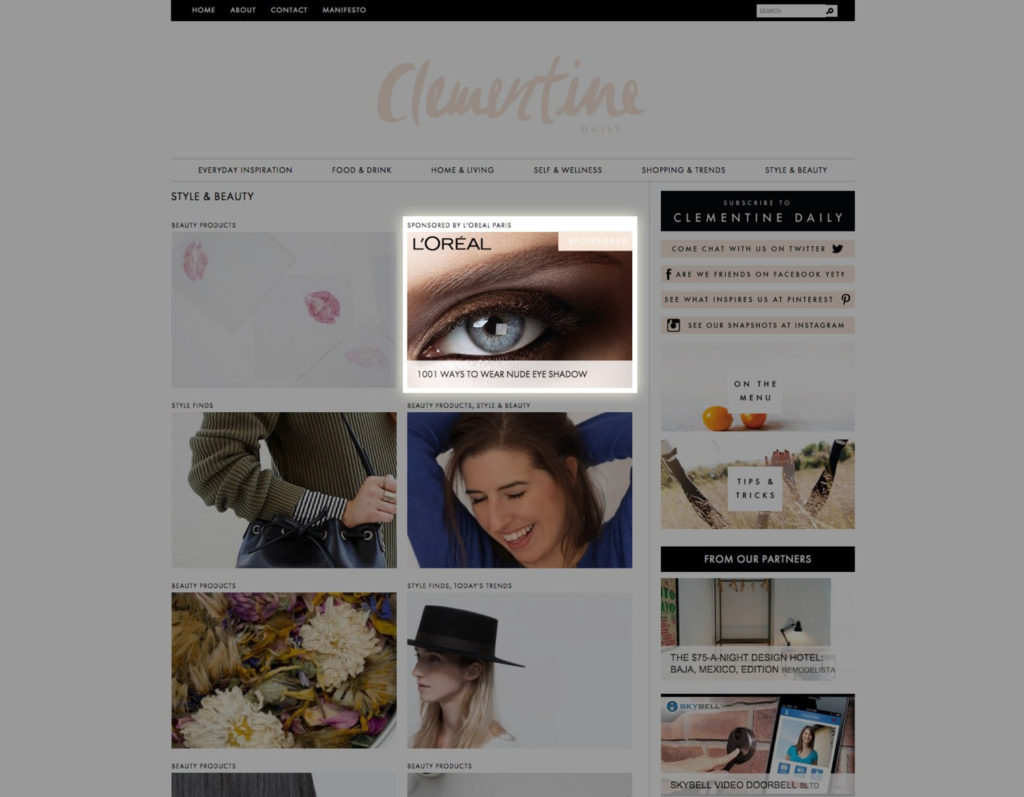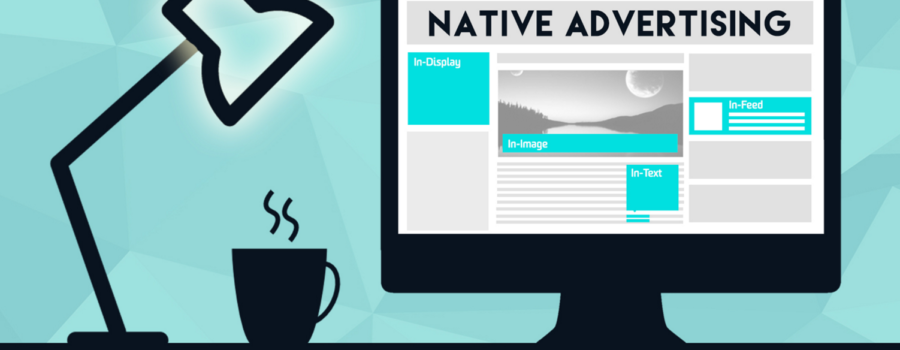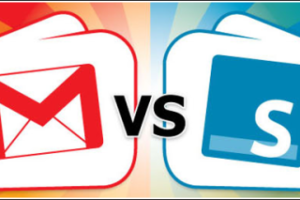WHAT IS IT?
One of the hottest trends in the marketing and advertising world is Native Advertising. What is Native Advertising you ask? Native Advertising is a form of advertising, usually online, that uses the “DNA” of the website to match the design and function of the platform of which it appears. Native Ads yield fantastic engagement because they promote articles, videos, or products related to the content the user is already looking at. Here is an example of what an online Native Ad looks like:

NATIVE ADS VS. BANNER ADS
We are all familiar with banner ads. However, the proof is in the pudding when it comes to native ads and we can confidently say, native ads perform better than banner ads. Why is this? RELEVANCY, RELEVANCY, RELVANCY. As seen above, the promoted or sponsored content directly relates to the current webpage the user is on. Banner ads, however, frequently appear on irrelevant sites; often failing to resonate with the targeted user and resulting in poor campaign performance. For example, a car enthusiast might be reading a blog about cars and be served with a banner ad promoting a sale on jewelry. Not very appropriate, right? Conversely, a native ad promoting a sale on jewelry would target users browsing a fashion or jewelry website; creating a seamless user experience and presenting an ad that would resonate with the end user.
CONTENT IS KING
Native Advertising is not only about relevancy; the content of the ad is what drives the success. You can put out an ad for a product, article, etc. that is relevant to what the user is searching for or reading already to get exposure, but that does not mean it will be viewed or clicked. Here is the most important thing to avoid when creating a Native Ad:
- DO NOT use inaccurate, misleading, or sensational headlines to draw clicks.
- The content being provided to the user should avoid using shock value to gain their attention. Many will view these ads as “spam” and will not click on them, even if the content after the click is legitimate. The Native Ad can be the first impression on this user and having a positive experience goes a long way.
When this be avoided, users generally resonate and engage with the ads much more! They respond at a higher rate than the “in your face” pop up ads or irrelevant banner ads. In short, users are starting to mentally filter out these inferior digital ads as they become more and more inundated with inapt banner ads. Consumers are becoming accustomed to the predictable locations of banner ads; ignoring this irrelevant, antiquated lackluster digital means of advertising. But with Native Ads, the numbers don’t lie and prove how much more powerful they are in comparison to banner ads!
IT WORKS!
Here are some key figures showing that Native Advertising truly works better than banner advertisements:
- Native Ads are looked at 52% more often.
- Having the content viewed at a higher rate leads to more brand exposure/awareness, and can lead to more clicks on the advertisement.
- 71% of customers resonate and identify more with the brand.
- Because the ad is using relevant content for what is already being viewed or searched for, the customer will see it and personally identify with the brand.
- For example: someone reading an article on ESPN.com and seeing a sponsored ad by NIKE. They are now more likely to personally identify with NIKE .
- Users have 18% higher purchase intent when viewing a Native Advertisement.
- With the increase in purchase intent, companies now have higher odds of making a sale on the product they are promoting.
- Because the ad is using relevant content for what is already being viewed or searched for, the customer will see it and personally identify with the brand.
THINGS TO REMEMBER
Native Advertising campaigns can be effective and successful as long as companies have great content and avoid the “DO NOT” list. This trend in marketing and advertising yields such great results that many of the top content providers are selling space on their pages for Native Ads. With the growing number of companies jumping on the trend, users can be exposed to relevant advertisements and better enjoy their browsing experience.





